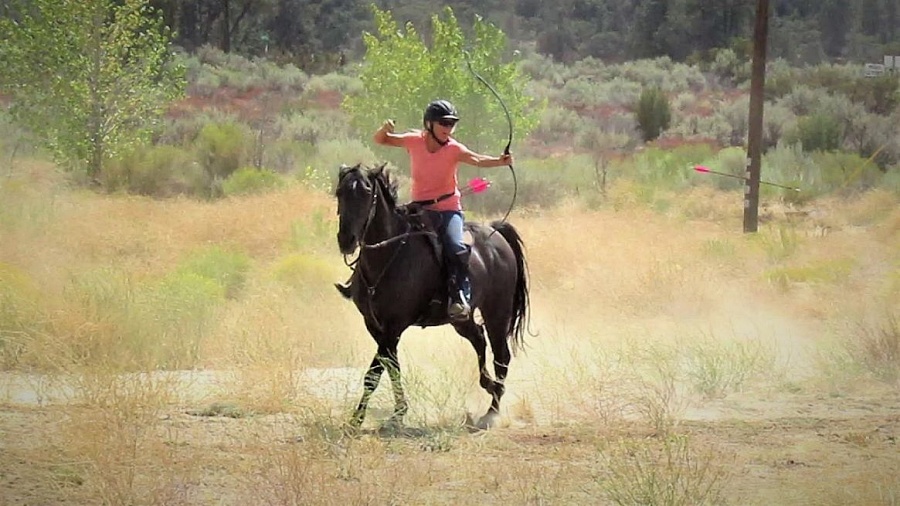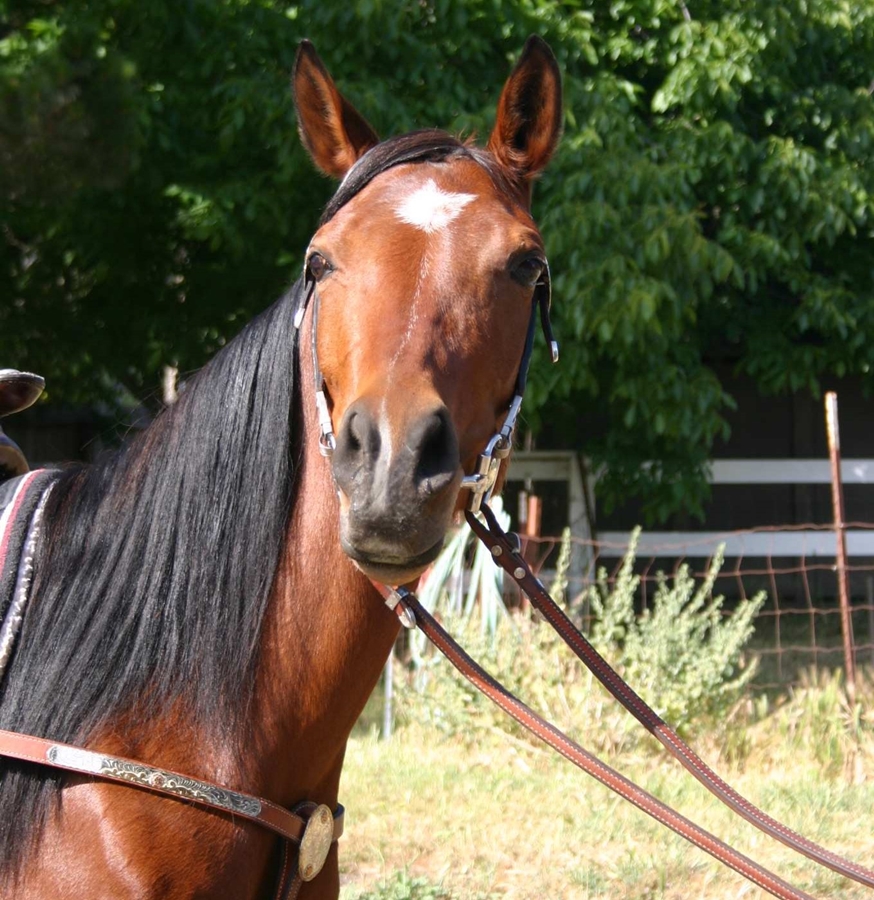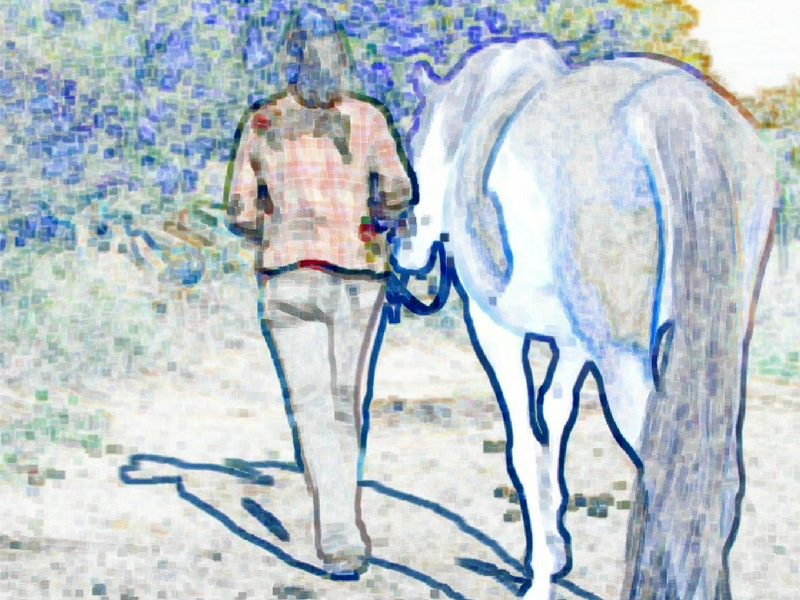“I’m ridiculously obsessed with horse archery,” confesses Judy Osburn while describing her new-found love of the sport. “I rarely make it past my archery course without working on improving my skills!”
It all Started at a Horse Archery Clinic
A year ago Judy Osburn saw a Facebook post telling about a Horse Archery Clinic with Elizabeth Gonzales Tinnan. Judy jumped on the opportunity, hooked up the horse trailer and joined twelve others in Barstow to learn about horse archery. Some took the Intro to Horse Archery Class and some were Repeat Offenders. “I knew I would like it,” Judy relates, “and now I’m totally hooked.”
At the clinic there were horse and rider pairs of various levels of ability and comfort. “Elizabeth Gonzales Tinnan gave clear instruction and efficiently structured drills to each person’s level of comfort,” explained Judy, “Even if she needed to lead a horse through, nobody felt their time was usurped.”
Progress and Training Steps
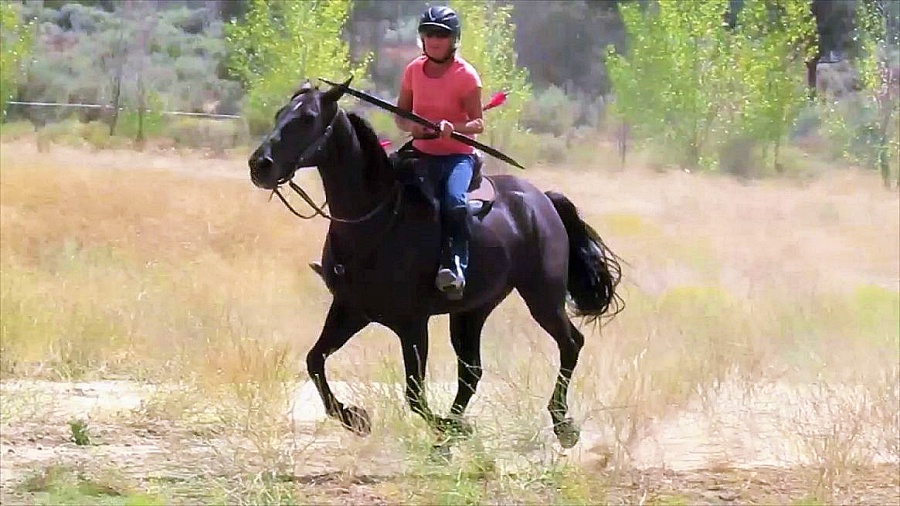
Judy had already been working on her relationship with her horse through delving into bridleless riding. This set her up well to begin shooting arrows off her horse. The first step is getting the horse acclimated to hearing the twang of the bow shooting the arrow. “We shoot beside the horses so they get used to it,” describes Judy.
Next a horse walks a course, usually within a roped-off lane next to an arena rail with the rider on board. The targets are over on the other side of the rope. Courses are started at the walk and then horse and rider pairs progress to trotting and finally to cantering. A slow, balanced canter is needed for the best timing to release the arrow and hit the target.
The Thrill of Horse Archery
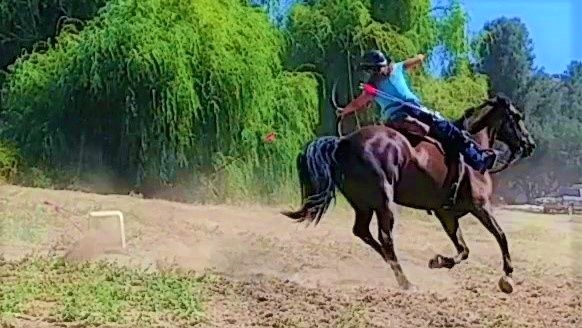
“We’re basically running our horses without our hands on the reins and not looking where we are going!” exclaims Judy as she half-jokingly describes the thrill of horse archery. Horses are trained to go without hand contact, using a short single rein (such as a roping rein) lying loose over the horse’s neck, often with a piece of nylon stocking or other piece elastic looped around the rein and tied to the saddle to keep the rein sitting on the horse’s neck within easy reach of the rider.
Regional and national competitions include separate walk, trot and canter classes. Tracks are set with a rail to keep the horse going straight down the track with the rider shooting across a rope barrier that spans the track parallel to the rail. Other competitions involve “barrierless tracks” through woods or open fields shooting at targets on both the left and the right sides of an open track.
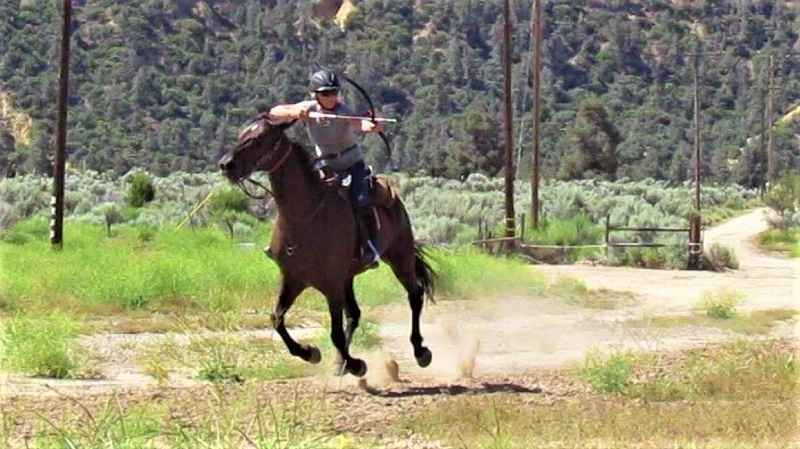
“Gracie already enjoyed obstacle courses so she took to horse archery really well,” says Judy of her 11-year-old Tennessee Walking horse who is her horse archery partner. Judy’s biggest challenge is getting Gracie to canter at a slow pace so Judy can get three shots off before the end of the track. Horses and riders can come from a variety of experiences to get started in horse archery.
The Bow and Arrows plus Targets
The Bow
Most mounted archers use a traditional recurve bow between 48” and 64” with a draw weight between 30 and 45 pounds. Judy uses a youth bow for its extremely light draw weight of 25 pounds. Though she plans on moving to a slightly higher draw weight as her arm and shoulder muscles have strengthened with use. A relatively light draw weight is plenty for this sport, as targets are never a great distance from the track. Compound bows and arrow rests or shelves are not used in horse archery.
A bow becomes a close friend as a kindred attachment forms between the user and the bow and even the arrows. The attachment deepens when the user names one’s weapon. Judy has named her bow, Rhythm. The release of the arrow often is in sync with the steady rhythm of her horse’s hoof beats.
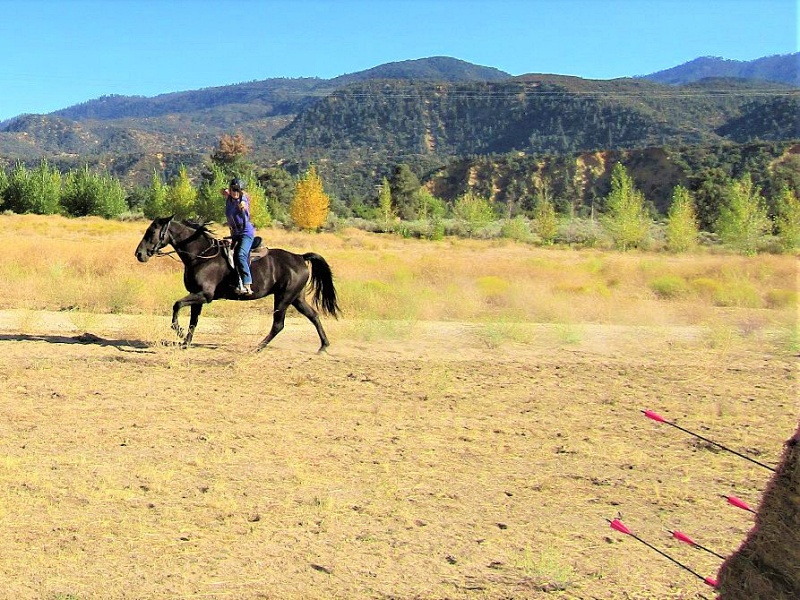
The Arrows
The arrows are often held in a hip quiver which make them easier to access for beginners. More advanced horse archery riders will have a quiver on their back, just like Robin Hood. All archers use a quiver of some type.
The Targets
Horse archery competitions involve points hitting the target and time. Faster times break a tie in target points. Judy is progressing in her horse archery skills and she is considering getting into competitions. “I want to be able to shoot three arrows off before the end of the track while at the canter,” she expressed when asked about her goal before considering a competition.
Inspiring Others to Experience Horse Archery
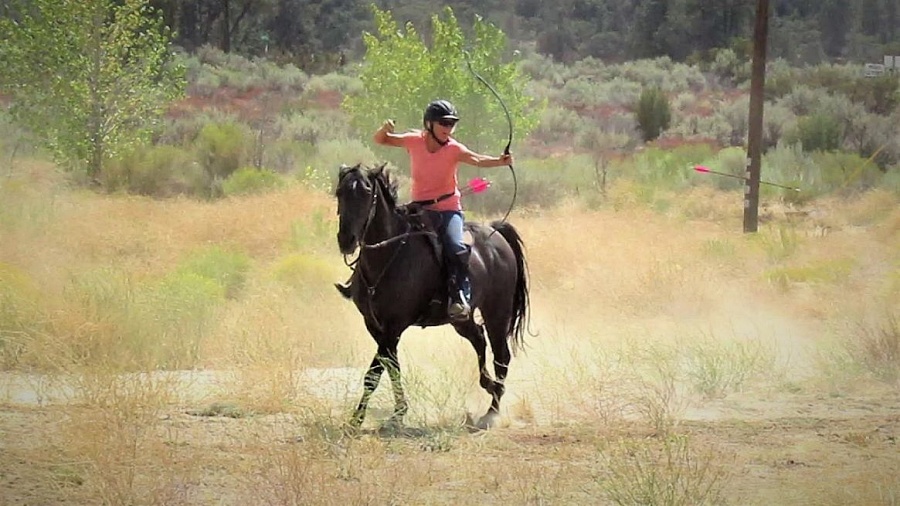
Judy loves this sport so much she wants to inspire others to get into the fun and thrill of it as well. “I do plan to take Elizabeth’s Train the Trainers clinic,” explains Judy. “Though first I want to participate in another Introduction and Repeat Offender clinic. I plan to learn a second archery draw style suitable for me to shoot toward the other side of the track, as well as to improve my overall skills in this sport.” As she gains experience and exposure in the sport, Judy wants to inspire other Central Coast riders to enjoy the sport of horse archery.
Judy and her husband reside in Upper Ventura County near New Cuyama. She raised two daughters who both learned to love riding. One daughter went on to develop her skills further and now trains others how to build a deeper connection with their horse, including bridleless riding.
Typical Tack Used
Typical tack used for horse archery is either an English jumping saddle or an Australian saddle, as both have low pommels and no horn. Riders riding at the canter will be leaning forward and using their balance and upper body to rate the horse back while their arms are raised with shoulders back to shoot the arrow. A horse will wear a bridle but most of the control is done by the rider without using hands.
Looking to Get on Board with Horse Archery?
Judy suggests to anyone interested to take part in a horse archery clinic. Other activities geared to helping you prepare are working on riding your horse bridleless and learning how to shoot with a bow and arrow. However, some participants with archery experience enter the sport with little or no horse experience, while others with extensive horse experience have never shot a bow and arrow prior to the groundwork portion of an introductory horse archery clinic.
You can find out more about Horse Archery USA through their website. More information and interaction with others can happen on the Horse Archery Facebook page and the Mounted Archery Facebook page plus the International Horseback Archery Alliance page.
One more handy thing to work on is this . . . beg a friend or grandchild (but not your dog due to bite marks and saliva) to fetch the arrows!
Photo Credit: Judy Osburn
 Get Going! Explore the wonder and beauty of the SLO County trails from the best place on earth, the back of a horse. To keep this info at your fingertips we have developed a FREE Hot Sheet that will direct you a few trail ride stories. We’ll continue to add trail ride stories to our website. You can stay up-to-date by becoming a SLO Horse News herd member. Get your Riding the SLO County Trails Hot Sheet here >.
Get Going! Explore the wonder and beauty of the SLO County trails from the best place on earth, the back of a horse. To keep this info at your fingertips we have developed a FREE Hot Sheet that will direct you a few trail ride stories. We’ll continue to add trail ride stories to our website. You can stay up-to-date by becoming a SLO Horse News herd member. Get your Riding the SLO County Trails Hot Sheet here >.

